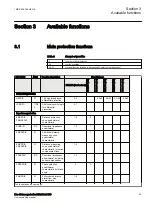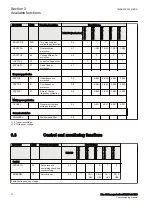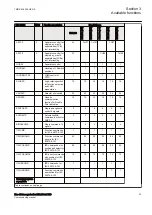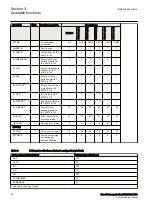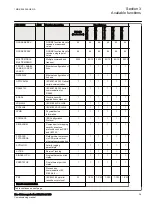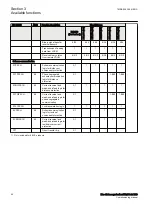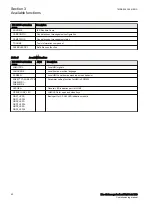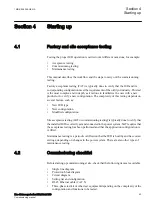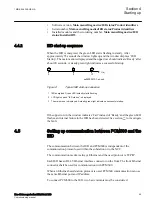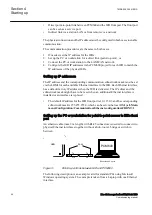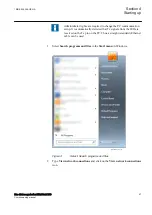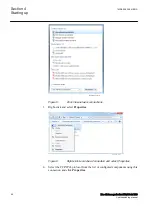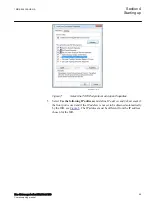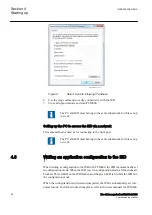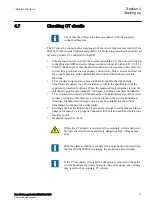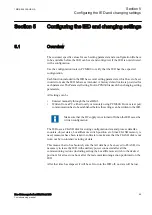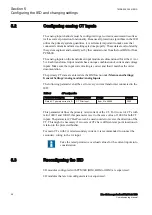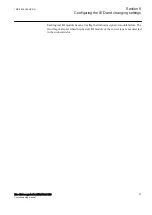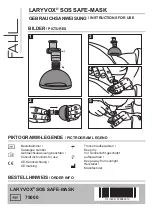
Section 4
Starting up
4.1
Factory and site acceptance testing
Testing the proper IED operation is carried out at different occasions, for example:
•
Acceptance testing
•
Commissioning testing
•
Maintenance testing
This manual describes the workflow and the steps to carry out the commissioning
testing.
Factory acceptance testing (FAT) is typically done to verify that the IED and its
corresponding configuration meet the requirements of the utility or industry. This test
is the most complex and in depth, as it is done to familiarize the user with a new
product or to verify a new configuration. The complexity of this testing depends on
several factors, such as:
•
New IED type
•
New configuration
•
Modified configuration
Site acceptance testing (SAT or commissioning testing) is typically done to verify that
the installed IED is correctly set and connected to the power system. SAT requires that
the acceptance testing has been performed and that the application configuration is
verified.
Maintenance testing is a periodic verification that the IED is healthy and has correct
settings, depending on changes in the power system. There are also other types of
maintenance testing.
4.2
Commissioning checklist
Before starting up commissioning at site, check that the following items are available.
•
Single line diagram
•
Protection block diagram
•
Circuit diagram
•
Setting list and configuration
•
RJ-45 Ethernet cable (CAT 5)
•
Three-phase test kit or other test equipment depending on the complexity of the
configuration and functions to be tested.
1MRK 506 355-UEN A
Section 4
Starting up
Line distance protection REL670 2.1 IEC
43
Commissioning manual
Summary of Contents for Relion 670 Series REL670
Page 1: ...Relion 670 series Line distance protection REL670 2 1 IEC Commissioning manual ...
Page 2: ......
Page 30: ...24 ...
Page 34: ...28 ...
Page 64: ...58 ...
Page 68: ...62 ...
Page 90: ...84 ...
Page 254: ...248 ...
Page 260: ...254 ...
Page 269: ...263 ...

